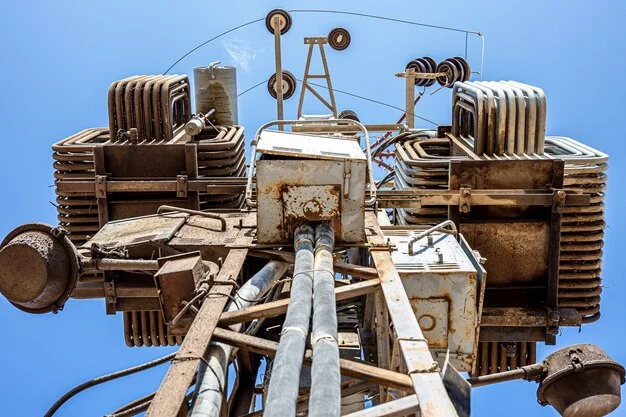Transformers are the backbone of every business’s power system. They quietly operate in the background, altering voltage to create usable electricity, and go unnoticed until a power failure shuts everything down. For business owners who buy a transformer instead of relying on the power company, recovering from outages falls entirely on them, as does repairs and maintenance.
Owning your transformer comes with many benefits, including a lower power bill, but before you jump into ownership, it’s important to know what you’re getting into and why regular maintenance and repairs can’t be skipped.
The true cost of transformer failure is massive
Unpredictable natural disasters aside, a regular, comprehensive maintenance program is the only way to prevent premature transformer failure. Even the best transformers are susceptible to wear and tear. For instance, although dry-type transformers tend to be more reliable than oil-filled units, dry-types still require maintenance to operate properly.
Neglecting routine maintenance will inevitably lead to breakdowns and possibly failure. When a transformer fails, expenses can pile up fast. Here’s what you can expect to deal with when this happens:
· Lost productivity. Every minute the power is out means halted production, missed deadlines, and frustrated customers.
· Emergency repairs. Emergency repair services come with inflated fees that are between 50% and 100% higher than normal rates.
· Spoiled inventory. If your business deals with food, pharmaceuticals, or any temperature-sensitive products, a transformer failure can destroy your inventory and cost you thousands of dollars.
· Lost customers. Once customers realize you can’t recover from a power failure fast, they’ll go to the competition.
· Reputational damage. Frequent outages can create a bad name for your brand, especially when your services are critical.
· Insurance nightmares. Some policies exclude claims that can be traced to poor maintenance. If you don’t have a paper trail to prove regular upkeep, your claim could be denied.
· Warranty denials. Just like insurance policies, most transformer warranties require proof of regular maintenance to get reimbursed for covered repairs.
· A wait time for a new unit. The current transformer shortage can leave you waiting on a new unit for up to two years.
These costly inconveniences can be mostly avoided with routine preventive and predictive maintenance programs.
What causes transformer failure?
There are a handful of problems that cause transformers to fail, but according to the data, the top two are insulation failure and poor design/material/workmanship. Not surprisingly, insulation failure is often caused by the latter. This makes it critical to buy a transformer from a reputable manufacturer with a track record of building reliable units with quality materials.
Other causes for transformer failure include:
· Oil contamination
· Overloading
· Fires
· Explosions
· Line surges
· Improper maintenance
· Improper operation
· Floods
· Loose connections
· Lightning strikes
· Moisture
The majority of these failures can be prevented with proper maintenance and by purchasing a high-quality transformer made by expert craftsmen.
Transformer ownership is a huge responsibility
When you own your transformer, the power company isn’t going to save you when the lights go out. It’s completely your responsibility to stay on top of the following maintenance tasks:
1. Repairs, replacements, and rentals
A maintenance routine will alert you to necessary repairs before it’s too late, giving you enough time to fix minor problems and pay normal repair rates. If your transformer is nearing the end of its lifecycle, you can order a replacement well ahead of time, accounting for extended lead times.
In some cases, you might need to rent a transformer temporarily, but again, a maintenance routine will give you a heads-up about potential issues so you can act early.
2. Regular inspections
Inspections are central to transformer maintenance and aren’t optional. Inspecting your transformer and surrounding components, including the enclosure, is the only way to catch small issues before they become catastrophic breakdowns.
3. Backup planning
Having a backup plan is part of a solid maintenance routine. You’ll need a backup power source or transformer to resume operations quickly and smoothly. Otherwise, downtime can go on for days, weeks, or even months.
Having a backup transformer on hand is by far the most effective continuity plan. For example, in 2019, a major utility company in the Chicago area suffered a critical transformer failure, but they were able to recover quickly by bringing in a spare transformer they had already stored away.
Regular maintenance will keep you in business
Implementing regular transformer maintenance will cost money, but it’s a crucial investment to keep your business running smoothly. From preventing costly breakdowns to extending the life of your transformer, regular upkeep will pay for itself many times over.
Without it, you’re not just risking equipment failure – you’re risking your entire business.







